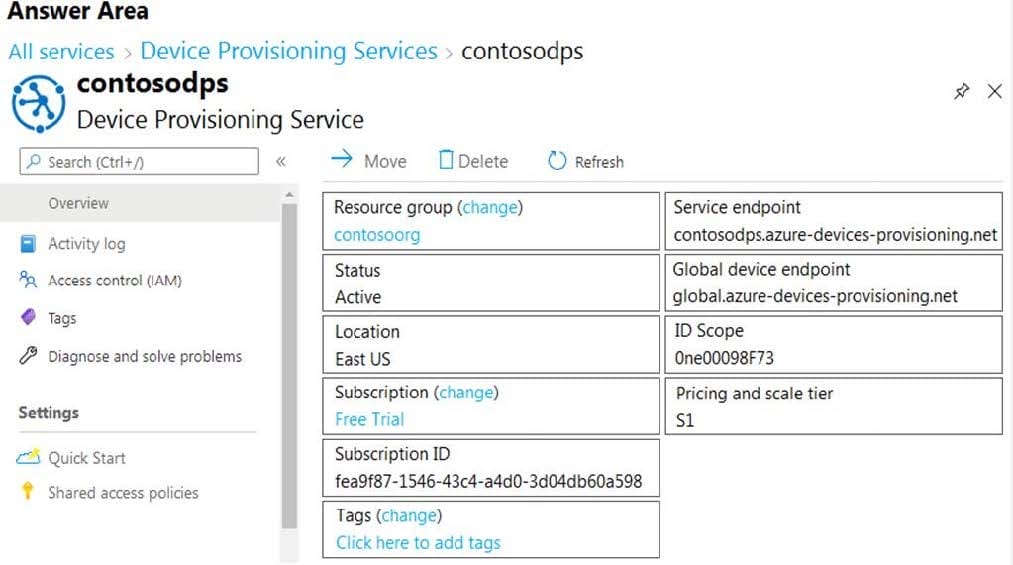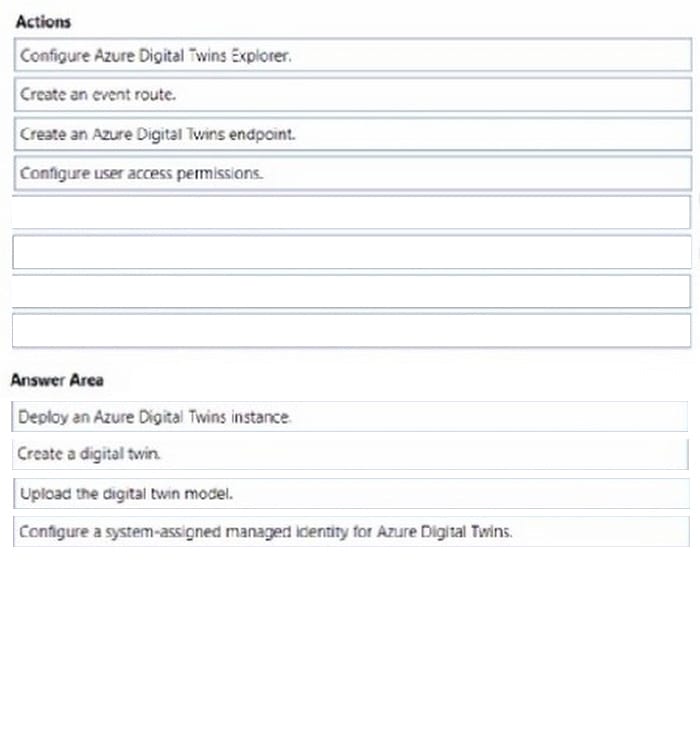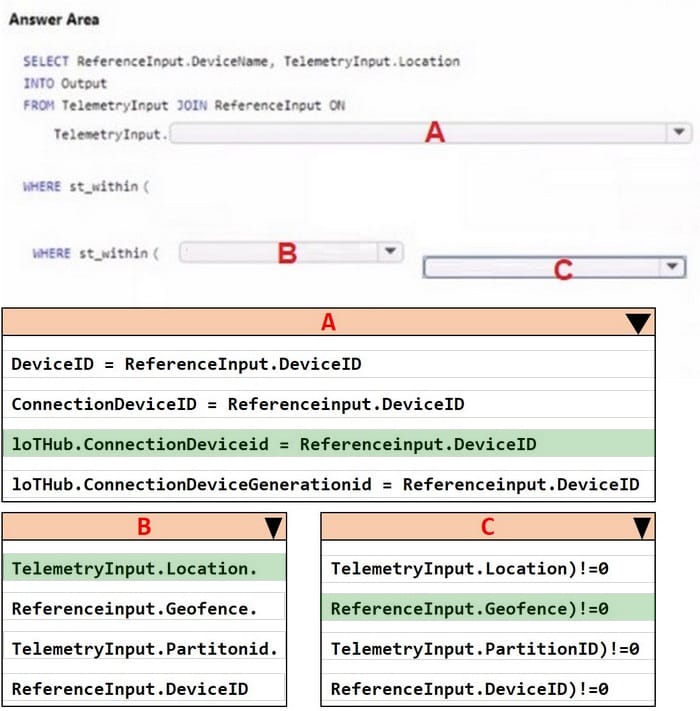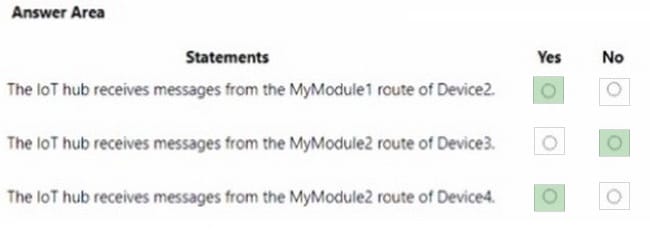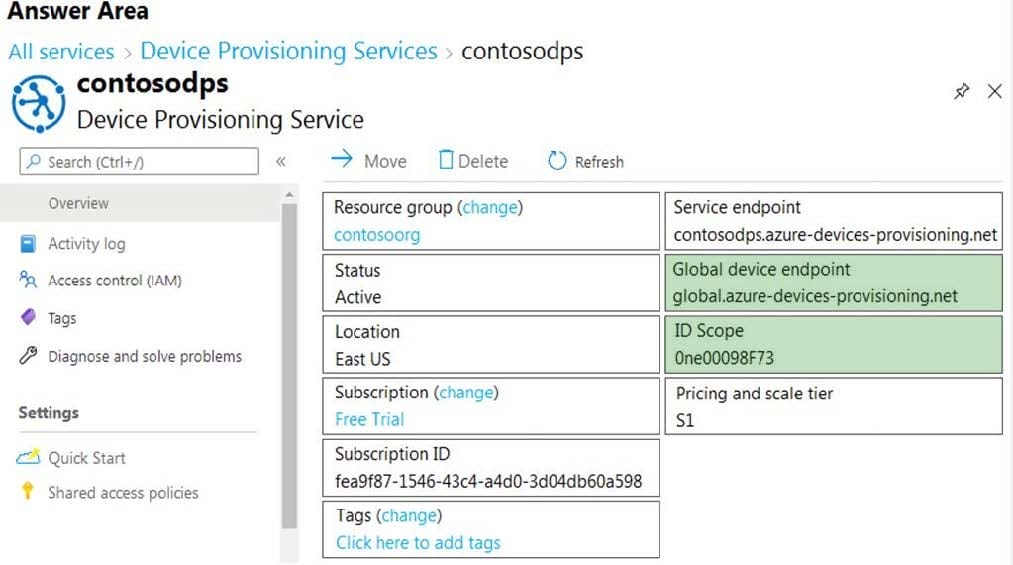AZ-220 Online Practice Questions and Answers
Questions 4
You have an Azure IoT Central application.
You add an IoT device named Oven1 to the application. Oven1 uses an IoT Central template for industrial ovens.
You need to send an email to the managers group at your company as soon as the oven temperature falls below 400 degrees.
Which two actions should you perform? Each correct answer presents part of the solution.
NOTE: Each correct selection is worth one point.
A. Create a SendGrid account in the same resource group as the IoT Central application.
B. Add a condition that has Time Aggregation set to Off.
C. Add a condition that has Aggregation set to Minimum.
D. Add the Manager role to the IoT Central application.
E. From IoT Central, create a telemetry rule for the template.
Questions 5
You have an Azure IoT solution that includes an Azure IoT Hub named Hub1 and an Azure IoT Edge device named Edge1. Edge1 connects to Hub1.
You need to deploy a temperature module to Edge1.
What should you do?
A. From the Azure portal, navigate to Hub1 and select IoT Edge. Select Edge1, and then select Manage Child Devices. From a Bash prompt, run the following command: az iot edge set-modules -device-id Edge1 -hub-name Hub1 -content C:\deploymentMan1.json
B. Create an IoT Edge deployment manifest that specifies the temperature module and the route to $upstream. From a Bash prompt, run the following command: az iot hub monitor-events-device-id Edge1 -hub-name Hub1
C. From the Azure portal, navigate to Hub1 and select IoT Edge. Select Edge1, select Device Twin, and then set the deployment manifest as a desired property. From a Bash prompt, run the following command: az iot hub monitor-events-device-id Edge1 -hub-name Hub1
D. Create an IoT Edge deployment manifest that specifies the temperature module and the route to $upstream. From a Bash prompt, run the following command: az iot edge set-modules -device-id Edge1 -hub-name Hub1 -content C:\deploymentMan1.json
Questions 6
Note: This question is part of a series of questions that present the same scenario. Each question in the series contains a unique solution that might meet the stated goals. Some question sets might have more than one correct solution, while
others might not have a correct solution.
After you answer a question in this section, you will NOT be able to return to it. As a result, these questions will not appear in the review screen.
You have an Azure Stream Analytics job that receives input from an Azure IoT hub and sends the outputs to Azure Blob storage. The job has compatibility level 1.1 and six streaming units.
You have the following query for the job.

You plan to increase the streaming unit count to 12.
You need to optimize the job to take advantage of the additional streaming units and increase the throughput.
Solution: You change the compatibility level of the job to 1.2.
Does this meet the goal?
A. Yes
B. No
Questions 7
You have an Azure IoT hub.
You need to enable Azure Defender for IoT on the IoT hub.
What should you do?
A. From the Security settings of the IoT hub, select Secure your IoT solution.
B. From the Diagnostics settings of the IoT hub, select Add diagnostic setting.
C. From Defender, add a security policy.
D. From Defender, configure security alerts.
Questions 8
You have an Azure IoT solution.
You need to create a digital twin model.
Which language should you use?
A. XHTML
B. DTDL
C. YAML
D. XML
Questions 9
After you answer a question in this section, you will NOT be able to return to it. As a result, these questions will not appear in the review screen.
You have an Azure IoT solution that includes an Azure IoT hub and an Azure IoT Edge device.
You plan to deploy 10 Bluetooth sensors. The sensors do not support MQTT, AMQP, or HTTPS.
You need to ensure that all the sensors appear in the IoT hub as a single device.
Solution: You configure the IoT Edge device as an IoT Edge identity translation gateway. You configure the sensors to connect to the device.
Does this meet the goal?
A. Yes
B. No
Questions 10
DRAG DROP
You need to configure a digital twin to accept device telemetry data from the loT hub
Which four actions should you perform m sequence?
To answer, move the appropriate actions from the list of actions to the answer area and arrange them in the correct order.
Select and Place:
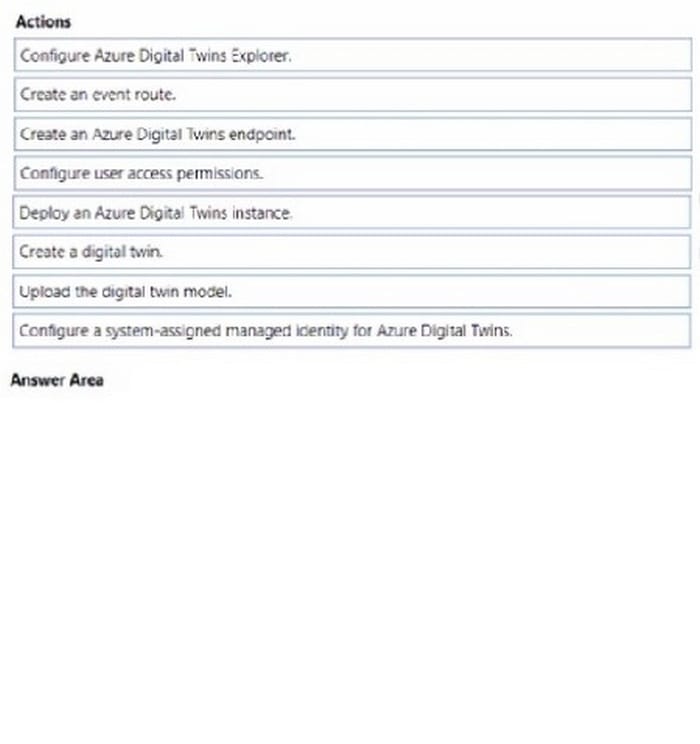
Questions 11
HOTSPOT
You have an Azure 10T hub and an I0T device.
You are developing an loT solution that will generate an alert when the IoT device leaves a geofenced area. The device sends telemetry in the following format.
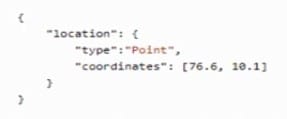
You create an Azure Stream Analytics job that uses telemetry input from the loT hub and a reference input that contains the data shown in the following table.

How should you complete the Stream Analytics query? To answer, select the appropriate options in the answer area. NOTE: Each correct selection is worth one point.
Hot Area:
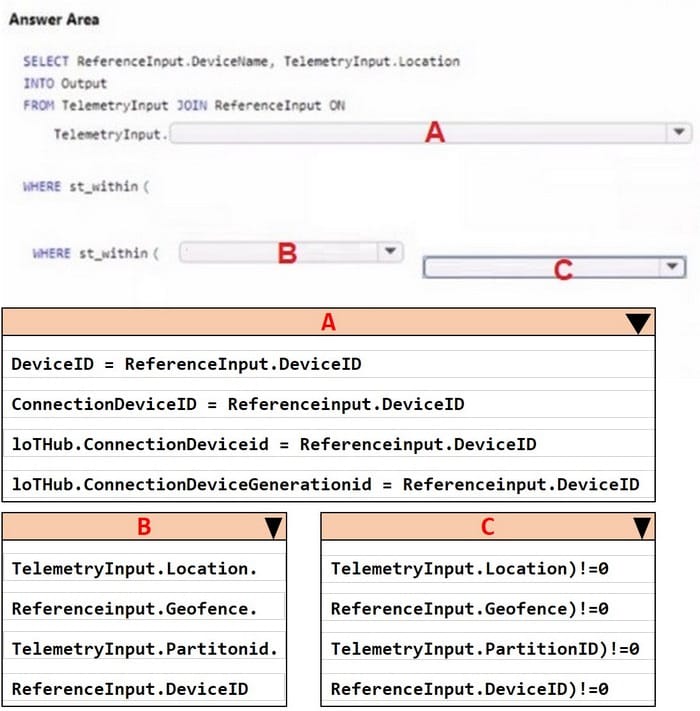
Questions 12
HOTSPOT
You have an Azure loT hub You have four Azure loT Edge devices and. The device twin code shown in the following table.
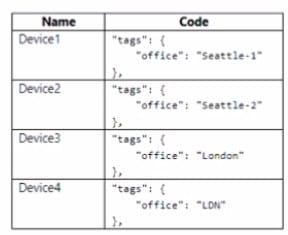
You have three deployments and the deployment code shown in the following table.
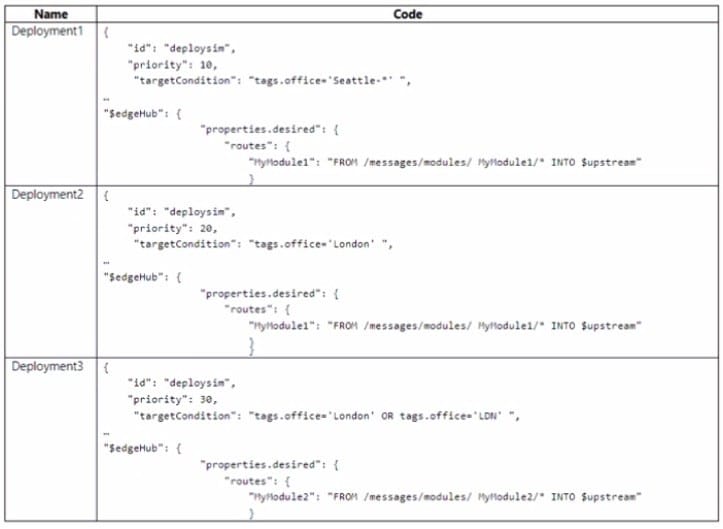
For each of the following statements, select Yes if the statement is true. Otherwise, select No. NOTE: Each correct selection is worth one point.
Hot Area:
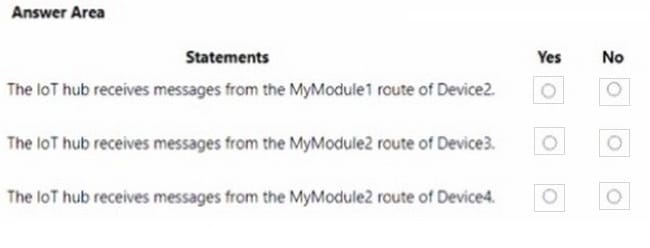
Questions 13
HOTSPOT
You are writing code to provision IoT devices by using the Device Provisioning Service.
Which two details from the Overview blade of the Device Provisioning Service are required to provision a new IoT client device? To answer, select the appropriate detail in the answer area.
NOTE: Each correct selection is worth one point.
Hot Area:
